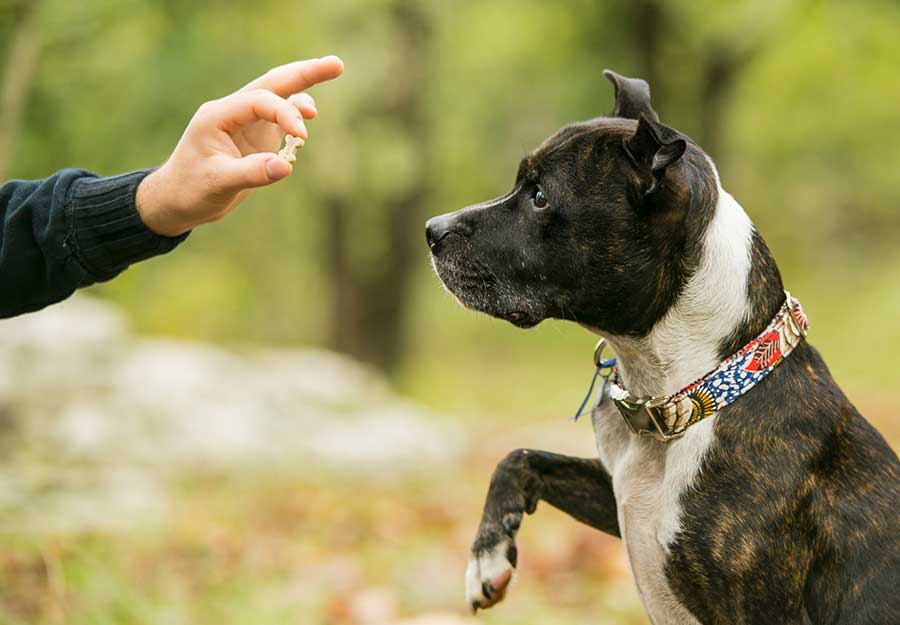Pet training is an essential aspect of responsible pet ownership. It involves teaching pets appropriate behaviors, commands, and skills to ensure they are well-mannered, obedient, and happy. Training helps strengthen the bond between pets and their owners while addressing behavioral issues and preventing problems.
Here’s a comprehensive look at pet training:
1. Why Pet Training Is Important
- Behavior Management: Proper training ensures pets understand what’s acceptable and what’s not. It can prevent behaviors like excessive barking, jumping, biting, or destructive chewing.
- Safety: Training commands like “sit,” “stay,” or “come” can keep pets safe in emergencies, ensuring they follow instructions even in unpredictable situations.
- Mental Stimulation: Training offers mental stimulation, which is essential for a pet’s well-being. Engaging pets in learning helps reduce boredom, which can lead to undesirable behaviors.
- Socialization: Training often involves exposing pets to various people, environments, and other animals, fostering good social skills.
2. Types of Pet Training
- Basic Obedience Training:
- Commands: Teaching pets fundamental commands like “sit,” “stay,” “come,” “down,” “heel,” and “leave it.” These help create structure and communication between the pet and owner.
- Leash Training: Teaching pets to walk calmly on a leash without pulling or tugging.
- Housebreaking/Potty Training: Training puppies or adult dogs to relieve themselves in appropriate places.
- Advanced Training:
- Advanced Commands: Teaching more complex commands like “roll over,” “fetch,” “spin,” or “stay in place.”
- Behavioral Cues: Training pets for specific tasks such as retrieving items or alerting to certain sounds or events.
- Behavior Modification:
- Correcting Unwanted Behaviors: This includes addressing issues like excessive barking, digging, jumping on people, aggression, or separation anxiety.
- Fear and Anxiety Management: Helping pets manage fear responses to things like thunderstorms, car rides, or visits to the vet.
- Specialty Training:
- Service Dog Training: Training dogs to assist people with disabilities, such as guiding those who are visually impaired, alerting people with hearing impairments, or providing emotional support.
- Therapy Dog Training: Teaching dogs to provide comfort and support to people in hospitals, nursing homes, schools, etc.
- Agility Training: Teaching pets to navigate obstacle courses, usually for competition or fun.
- Search and Rescue Training: Training dogs to locate missing persons or objects, commonly used by police and search-and-rescue teams.
3. Training Methods
- Positive Reinforcement:
- This method involves rewarding pets for good behavior, such as with treats, praise, or playtime. Positive reinforcement strengthens the behavior and encourages repetition.
- Clicker Training:
- A form of positive reinforcement where a clicker sound is used to mark the exact moment a pet performs the correct behavior. The click is followed by a reward.
- Operant Conditioning:
- This method involves using consequences to influence behavior, such as using rewards (positive reinforcement) or corrections (negative reinforcement) to either increase or decrease certain behaviors.
- Punishment-Based Training:
- Involves applying an unpleasant stimulus in response to unwanted behavior. This method is less commonly recommended nowadays due to potential harm or stress it may cause pets.
- Modeling/Imitation:
- Some trainers may use other well-behaved pets to show what’s expected, encouraging the pet to mimic their behavior.
4. Common Training Challenges
- Consistency: For training to be effective, it’s essential to consistently reinforce the same behaviors and commands. Inconsistent training can confuse pets.
- Patience: Some pets learn more quickly than others. Training requires time and repetition, and it’s important to stay patient and persistent.
- Motivation: Some pets are more motivated by treats, while others may respond better to toys or praise. It’s important to find the right motivator for your pet.
- Distractions: Pets may get distracted easily, especially in public spaces or around other animals. Gradual exposure to distractions is crucial for building focus.
5. Puppy Training
- Socialization: One of the most important aspects of puppy training is socialization, exposing the puppy to different environments, people, animals, sounds, and situations to build confidence and reduce future anxiety or aggression.
- Crate Training: This helps puppies develop healthy sleeping habits and learn to be comfortable in their crate, which can also help with housebreaking.
- Potty Training: Establishing a routine for bathroom breaks is crucial in the early stages. Consistency and positive reinforcement go a long way.
6. Dealing with Specific Issues
- Separation Anxiety: Many pets, especially dogs, can develop anxiety when left alone. Training for this often includes desensitization to being alone and creating positive associations with the owner’s absence.
- Aggression: Some pets may show aggression due to fear, territorial behavior, or stress. It’s best to address this with a professional trainer to avoid escalation.
- Barking: Excessive barking can be an issue for many dog owners. Training can help dogs understand when it’s appropriate to bark and when it’s not.
7. Training Tools and Equipment
- Leashes and Harnesses: Used for basic obedience and walking training.
- Training Collars: Can include standard collars, martingale collars (for controlling escape artists), or head halters (for gentle control).
- Clickers: Used in clicker training to mark desired behaviors.
- Treats and Toys: Essential for rewarding good behavior and keeping pets engaged.
- Crates and Kennels: Useful for housebreaking, crate training, and creating a safe space for pets.
8. Finding a Trainer
- Professional Trainers: Certified trainers often have specific expertise in behavior modification, obedience training, or even specialized training like service dog work.
- Group Classes: Many pet trainers offer group classes for basic obedience or specialized training. These provide socialization opportunities for pets as well.
- Online Training: Virtual or video-based training sessions can be helpful for owners who prefer a DIY approach or live in remote areas.
9. Training for Cats
- While often thought of as independent creatures, cats can also be trained. Common cat training includes:
- Litter box training
- Leash training
- Teaching simple commands like “sit” or “high five”
- Behavior modification for scratching furniture or aggressive behaviors
10. Benefits of Training
- Better Communication: Effective training improves the ability to communicate with your pet and better understand their needs.
- Stronger Bond: Training fosters a deeper connection between pets and their owners, helping pets understand boundaries and trust their handlers.
- Healthier Pets: Training helps provide mental stimulation, physical exercise, and an outlet for energy, contributing to the pet’s overall well-being.
Pet training is a valuable tool that enhances a pet’s life and fosters a better relationship with the owner. Whether it’s basic obedience, solving behavioral problems, or teaching fun tricks, investing in proper training can lead to a well-behaved, happy pet.
Please fill your Details Below for a Free Pet Training Session at your Home.


